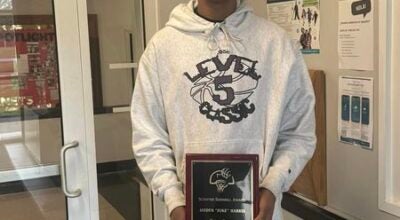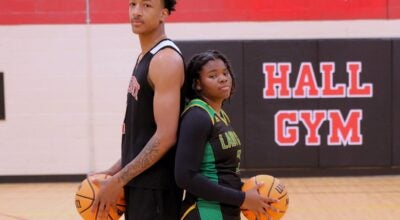Friday Night Legends: Loflin thankful for smashmouth Boyden practices
Published 12:00 am Friday, October 24, 2008
By Mike London
mlondon@salisburypost.com
If you were a Boyden freshman, the five words you least wanted to hear head football coach Bill Ludwig bark were, “Mr. Huneycutt, bring them up.”
Mr. Huneycutt was assistant Derwood Huneycutt, and the folks he was bringing up were jayvees. They were joining varsity practice as sacrificial lambs.
“We were walking dummies,” said Sam Loflin, who was introduced to his first official football gear in 1954. Prior to that, his football efforts had been limited to “tag” on sandlots.
When Loflin arrived at Boyden, the varsity was loaded with rugged guys who would win the 1955 state title. The meanest and toughest of a mean, tough lot was Ronnie Bostian, who would play at Duke.”A ferocious fellow,” Loflin said. “Unmerciful.”
The boldest member of Knox’s class was a back named George Knox. When Ludwig challenged the manhood of the cringing freshmen and doubted aloud if any of them would dare get within reach of Bostian, it was Knox who stepped forward and asked, “Where’s Bostian?”
Loflin did his best to talk sense into his buddy.
“I said, ‘George, you’re crazy, he’ll kill you,’ ” Loflin recalls. “But George Knox knew no fear.”
A few seconds later, Knox was not only fearless, he was unconscious.
“Ronnie just laid him out, knocked him cold,” Loflin said. “Flattened him like a piece of paper, but that didn’t stop George.”
When he came to, Knox was ready to try again.
Hard lessons piled up on a practice field with no grass and plenty of rocks, but the youngsters grew up. Loflin lined up across from Bostian most days. Bostian made his bones ache and his head ring, but he also made Loflin a great lineman.
“I came at Ronnie high the first time,” Loflin said. “I went in low after that.”
Boyden’s jayvees played varsity teams from the county and Loflin was pleased to find out he could excel when matched against normal people. It was a great relief to learn not everyone was Bostian.
Loflin remembers where organized football started for him. A fellow named Scoggins taught the sandlotters the basics of backfield and line play.
“I was clumsy, couldn’t throw it and couldn’t catch it,” Loflin said. “But he told me to just stand there and not let the defender get to the quarterback. I said, ‘I can stand here, and that guy has got to come to me? Hey, I like this game.’ ”
Loflin also remembers where football became a mission. He watched Boyden lose a championship dream 15-14 on an R.J. Reynolds field goal in 1952. He never forgot that crushing disappointment.
Toughened by Bostian and strengthened by informal weightlifting sessions in basements, Loflin was a horse by his junior year.
“I remember Coach Ludwig called me aside before that season and told me I had a chance to play in college,” Loflin said. “But he also said if I didn’t get straightened out in the classroom I’d never play.
“We were so fortunate to have men like Coach Ludwig and Coach Huneycutt around. They were major contributors to who I am today, and so is Horace Billings. We all tried to live up to what he was writing about us in the Post.”
Boyden was 6-3 Loflin’s junior year, but it was ready for a title run when he was a senior tackle in 1957.
That’s the year brilliant sophomore Eddie Kesler directed Ludwig’s single-wing offense. Knox, the fullback, and Bobby Crouch, the wingback, were dubbed the “Touchdown Twins.” Between them, they found the end zone 27 times.
Knox, fearless as ever, was Western Conference Player of the Year. Crouch was runner-up. Loflin tied for third in the voting.
Knox was the best player in the state and an All-American. He knocked one Asheville defender out cold.
“We only had seven seniors starting, but we probably were more agile and ran a few more plays than the guys who won the state in 1955,” Loflin said. “Crouch could run away from people, and Knox ran through them. Kesler had hands the size of fruit baskets, and they didn’t know if he was going to run or throw.”
Boyden ran audibles based on colors called out by blocking back Ed Julian. It quick-kicked often and played suffocating defense.
“The backs had to know a lot more than we did on the line,” Loflin said. “We just communicated ‘you go’ or ‘I go’ depending on whether our man was lined up to our left or to our right. One lineman would post and one would drive, and we’d double-team anyone. And if we needed 4 yards, George got 4 yards.”
Boyden tied A.L. Brown 6-6 to start the ’57 season, with Knox idled by the flu.
After routing Lexington — the first of seven shutouts — Boyden traveled to Wilmington. Roman Gabriel and his teammates beat them 26-20.
“I had my arms around Roman’s waist, and he still threw the ball 60 yards,” Loflin said. “We stayed in a hot hotel all day thinking about the game that night. Temperatures were in the 80s, and there was sand and fleas everywhere.”
Boyden’s bounce-back game was a 34-0 burial of Charlotte Central.
“Charlotte got frustrated,” Loflin said. “It was I go or you go and finally one of their lineman said, ‘Look, why don’t you just all go?’ ”
Reynolds, High Point, Asheville and Greensboro couldn’t scratch. Five shutouts in a row.
And almost six.
“The Burlington game I was a gnat’s eyebrow from sacking the quarterback, but he throws a Hail Mary and they score,” Loflin said.
In the regular-season finale, Gastonia scored early.
“They were all kind of laughing about it, but Coach Ludwig put Bill Torrence — he could really fly — in at safety and that stopped their passing,” Loflin said. “And that was that.”
The final was 37-14.
Boyden had expected a rematch with Gabriel, but Fayetteville won the Eastern Conference.
Fayetteville was no match for Boyden in the state championship game. Boyden rolled 21-0 at home in a downpour.
“The field was standing water, and I think it would have been called, but the people in charge didn’t get into town until late,” Loflin said. “But Coach always told us we were good mudders, and we were. The single-wing was mostly power. It was a great offense for bad weather.”Crouch was the offensive hero. Loflin, who stopped a key short-yardage play, and Jim Edmiston were defensive demons.
“I delivered papers for the Greensboro News, and the morning after that game Knox and Crouch wanted to go with me because they couldn’t wait to read about it,” Loflin said with a laugh. “George was destroyed. The story was all about Crouch.”
Loflin and Knox played together at North Carolina, while Crouch went to The Citadel. Six of seven seniors on Boyden’s 1957 team got scholarship offers.
Loflin, who is now in business with one of his sons in Kingsport, Tenn., celebrated his 50th wedding anniversary to Salisbury’s Jean Spencer in July, and he made it back home for a recent Boyden reunion.
Knox, who started for the Tar Heels at end, was among the missing. He was killed in a jeep accident in 1983, but his teammates still remember his spirit.
Loflin, Crouch and their teammates toasted great coaches, championships and a fullback who knew no fear.




